The origin of the Lhasa Apso
Recorded history of the Lhasa Apso goes as far back as 800 BC. Since then the breed has thrived in the Potala (the Dalai Lama's palace and monastery), other monasteries in or near Lhasa and in the homes of Tibetan nobles. It's impossible to buy a Lhasa in Tibet, as they are never sold. From the beginning of the Manchu Dynasty in 1583 and as recently as 1908, it was the practice of the Dalai Lama to send Apsos as sacred gifts with his blessing to the Manchu Emperors of China and members of the Imperial families.
The Apsos, which were always sent in pairs, were supposed to be bringers of good luck and prosperity, and it was a great honor to receive a pair. In the Indian Kennel Club Gazette you can read: "Strange little long haired small dogs were at one time called Talisman dogs and Sheng Trou." Sheng of course is related to the Tibetan word for lion. Some art historians today say that the carvings in Oriental art are modeled on the Apso.
It is believed that the word Apso is a corruption of the Tibetan word Rapso, which means goat like, likening the Apso to the small, longhaired Tibetan goat.
There are certain villages around Lhasa where the Apsos are bred. The Lamas and rich Tibetans search for them and obtain all that are available. They do not use them merely as pets. In the monasteries and the houses of the nobility they are used as sentinentels inside the house. Their breeding for generations as watchdogs has made the Lhasas unusually keen and intelligent. They are affectionate and devoted pets.
How, or why the Lhasa Apso came to be called the Lion dog of Tibet is really not definitely known. In fact, it's not definitely known why the sacred emblem of the Lion plays such an important part in Tibetan art and lore. Obviously there are no lions in Tibet now, and recorded history gives us no indications that there ever were any lions in Tibet. The Tibetan flag is composed of two green lions with a yellow sun and snow-capped mountain superimposed on a background of blue and red rays.
The relationship of the Lion Dog to a true lion is obviously symbolic. One connotation might be in the person of the Manjuri Buddha, the God of Learning, who is sometimes pictured with a small pet dog beside him. Buddhist theology tells us that this small pet could be transformed into a lion should the need arise, and could then be used by the Manjuri Buddha to escape danger.
It doesn't take much imagination to identify the Lhasa. It especially isn't hard to imagine if you are a Tibetan and stronlgy believe in reincarnation. The identification of the Lhasa Apso with the lion could well be furthered because of the little animal's habit when confronted by danger or an unwelcome intruder of pawing the ground, assuming a sturdy stance, and in all respect looking like a small lion. Again, this identification is reflected by the Tibetans when they affectionately call their dogs Abso Seng Kye or Bark, Sentinel Lion Dog.
All purebred Lhasas in existence outside the city of Lhasa in Tibet stem from pairs that were given as gifts to high officials, people of importance visiting the country and the courts of China.
The history of the Dutch Lhasa Apso
The first Lhasa Apso was imported to the Netherlands in 1965. This was Shaggy Wonder Orrin (Brackenbury Tarcho x Pedon). This dog, bred by Mrs. Mewis in Belgium, was imported by the late Mrs.Annie Schneider-Louter. She also imported the bitch Piltdown Droma (Ch.Verles Tom-Tru x Brackenbury Francesca) from the UK. Annie was the pioneer of the breed in the Netherlands. Her foundation stock included the bitch Verles Nang-Wa (Ch.Brackenbury Gunga Din of Verles x Verles Nga), imported from the UK, Shaggy Wonder Prista (Ch.Orlane's Golden Puppet x Verles Nyi), bitch and Shaggy Wonder Pitan (Ch.Orlane's Golden Puppet x Pedon), dog, both from Belgium. Since Annie started breeding her "de Warwinckel" line, there have been many changes. New breeders came and dissapeared, all trying to improve the type. As a result, we now have wonderful Lhasa Apsos in our country. Dutch Lhasas have a world-wide reputation for quality. They have been exported to such countries as the USA, Germany, India, Switzerland, Denmark, Spain and many more.
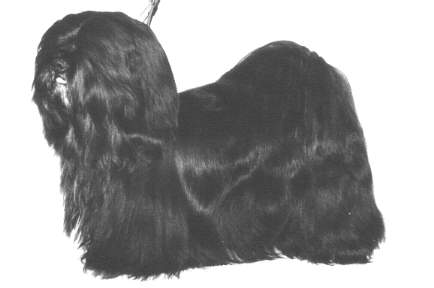
The imported Lhasas that had the greatest influence on the type in the Netherlands are:
Ch.Dolsa Marlo Matador (Ch.Zijuh Don-Na Tsamten x Cameo's Densa Dobra)
Ch.Marlo Rocky Road (Ch.San Jo Soshome Up x Ch.Marlo I Love Lucy)
Ch.Kai-La-Sha Tom Tru (Ch.Ja-Ma's Infra-Red x Ch.Kai-La-Sha Kha-Char)
Ch.Saxonsprings Alamo (Ch.Orlane's Intrepid x Saxonsprings Choula)
Ch.Saxonsprings Cascade (Ch.Orlane's Intrepid x Orlane's Lightline O'Lamplite)
Ch.Saxonsprings Song"N"Dance (Hickory of Saxonsprings x Saxonsprings Laby-B-Good)
Ch.Tn Hi Brick The Big Bang (Ch.Tn Hi Zeus The Dethroner x Ch.Tn Hi Pixie Minx)
Ch.Lingstoc Midas (Lingstoc The Jester x Dewell Hannah)
Ch. Chiyoko RA BMOC of Bo (Chiyoko's Wind B'Neath My Wings x Tall Oaks Tibetan Treasure)
Juell's Lord of the Rings (Ch.Juell's Pride And Prejudice x Ch.Light Up's Golden Graffiti)
Orlane's Simplicity of Geodan (Saxonsprings Earl x Ch.Orlane's Brandywyne)
It's a pity that a couple of the dogs mentioned above brought some serious faults into the breed. Some breeders were so blinded by the wins of non typical Lhasa Apsos in other countries, which resulted in breeding spectaculair dogs, only to win.
Two Dutch Lhasa Apsos became Top Dog of the Year in the Netherlands.
Unfortunately, not much is left of the original type in the Netherlands. When you visit a dog show, you will notice that most of the present dogs are too big, have fluffy coats, the Shih Tzu influence can easily be seen and the original temperament has been bred out to make it an easier breed to show.
|
A list of books about the Lhasa Apso and it's origin
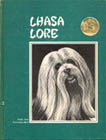
|
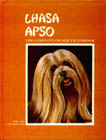
|
Lhasa Lore
Sally Ann Helf
|
The Complete Owners Handbook
Sally Ann Helf
|
|
|
|

|

|
The Complete Lhasa Apso
Norman and Carolyn Herbel
|
The New Complete Lhasa Apso
Norman and Carolyn Herbel
|
| |
|

|
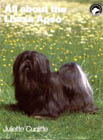
|
An Owner's Guide To A Happy Healthy Pet:
The Lhasa Apso - Carolyn Herbel
|
All About The Lhasa Apso
Juliette Cunliffe
|
| |
|
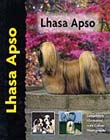
|

|
Lhasa Apso
Juliette Cunliffe
|
Pet Owner's Guide To The Lhasa Apso
Juliette Cunliffe
|
| |
|

|

|
Your Lhasa Apso
Robert J. Berndt
|
A New Owner's Guide To Lhasa Apsos
Nancy Plunkett
|
| |
|

|

|
How To Raise And Train A Lhasa Apso
Patricia and Thomas Chenoweth
|
The Lhasa Apso
Frances Sefton
|
|
|
|

|

|
Know Your Lhasa Apso
Earl Schneider
|
Le Lhassa Apso
Club Des Chiens Du Tibet
|
| |
|
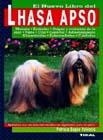
|

|
El Nuevo Libro Del Lhasa Apso
Patricia Duque Valencia
|
Lhasa Apsos
Diane McCarthy
|
| |
|

|

|
The Lhasa Apso
Anne Katherine Nicolas
|
Guide To Owning A Lhasa Apso
Jennifer Zeppi
|
| |
|
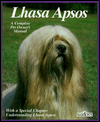
|

|
Lhasa Apsos - A Complete Pet Owner's Manual
Stephen Wehrmann
|
De Lhasa Apso Als Gezelschapsdier
Yvonne Krabbenbos
|
| |
|
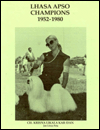
|
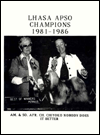
|
|
Lhasa Apso Champions 1952-1980 (USA)
|
Lhasa Apso Champions 1981-1986 (USA)
|
| |
|
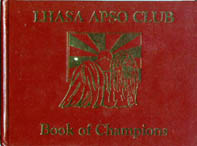
|
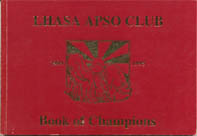
|
Book Of Champions 1 (UK)
Lhasa Apso Club
|
Book Of Champions 2 (UK)
Lhasa Apso Club
|
| |
|
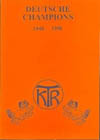
|
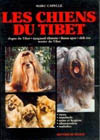
|
Deutsche Champions 1948-1990
KTR Germany
|
Les Chiens Du Tibet
Marc Capelle
|
| |
|
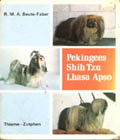
|

|
Pekingees, Shih Tzu, Lhasa Apso
R.M.A. Beute-Faber
|
Tibetaanse Honden
Winfried Nouc
|
| |
|

|
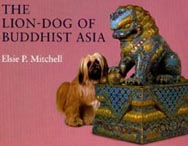
|
Lhasas And Lamas
Joan A. Beard
|
The Lion-Dog Of Buddhist Asia
Elsie P. Mitchell
|
| |
|

|
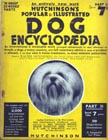
|
This Is The Lhasa Apso
Joan McDonals Brearley
|
Dog Encyclopedia Part 31
Hutchinson
|
| |
|

|

|
A Brief Account Of Tibetan Dogs
The Tibet House Apso Committee In New Delhi
|
The Lhassa Lion Dog
Madame Lu Zee Yuen Nee
|
| |
|

|

|
A Brief Account of Tibetan Dogs
Jacqueline Tutton
|
The Fire Ox And Other Years
Suydam Cutting
|
|
















































